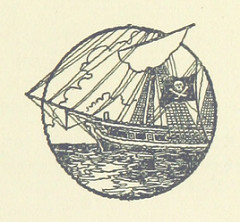
The Irish Tourist Development guidebook Visit Ireland, compiled in 1892 by F. X. Crossley and available in scanned form from the British Library Labs, contains a variety of useful information for the traveller of the 1890s, including timetables for railway, trams and steamer sailings, seasonal dates for game, estimates for how much you might expect to pay to hire a jaunting car, what local newspapers are likely to be available at your chosen hotel – and the political orientations of said newspapers.

Like many a modern guidebook, Visit Ireland seems to have relied on advertising revenue to cover some of its costs, and the back pages contain a number of ads for goods and businesses (including some familiar names such as Arnotts, Brown Thomas and the Lucan Spa Hotel).
These pages also have an unusual feature, in which the printers have made use of some free space at the bottom of each page by filling them with what’s described in the Contents as “Irish Comicalities”. The jokes are a bit on the quaint side to be considered offensive, but they do seem an odd choice of back matter for a book encouraging its (presumably mostly British) audience to come visit the delights of Ireland, being mostly based on the differences between the Irish and the English. As you might imagine, the Irish generally come off worst.
The Irishman of our comicalities is illiterate, credulous, a bit short on reasoning and partial to a drink:




He’s also very likely to be named Patrick, or some variation on same. However, he’s not always the butt of the joke, sometimes turning the tables on a would-be prankster:

I’m pretty sure this one here is still doing the rounds:

I confess I can’t say exactly what’s going on in this next joke (perhaps I’m a century too late to get the reference), but it sounds like the Pat in question is doing well, at least in terms of wordplay:

And then there’s THIS riposte to the Paddy-Irishman jokes:

Finally, I’m afraid this final joke (if that’s what it is?) is totally beyond me. Any readers from the Lancashire region who’d care to elucidate?

Irish stereotypes and other types of ethnic humour are by no means lacking in the 19th century books from the British Library corpus, but it’s intriguing to see their deployment in a tourist development text!

